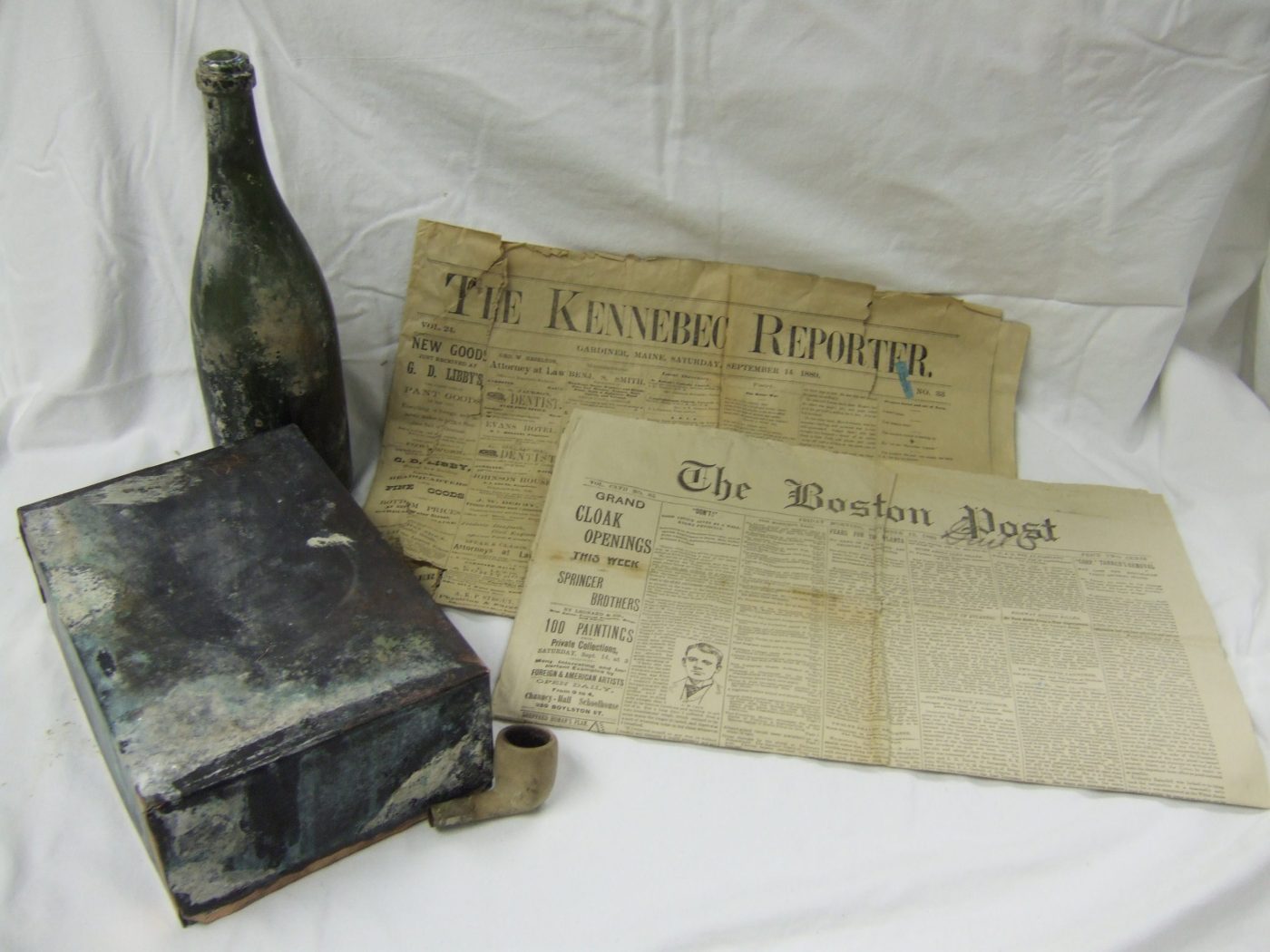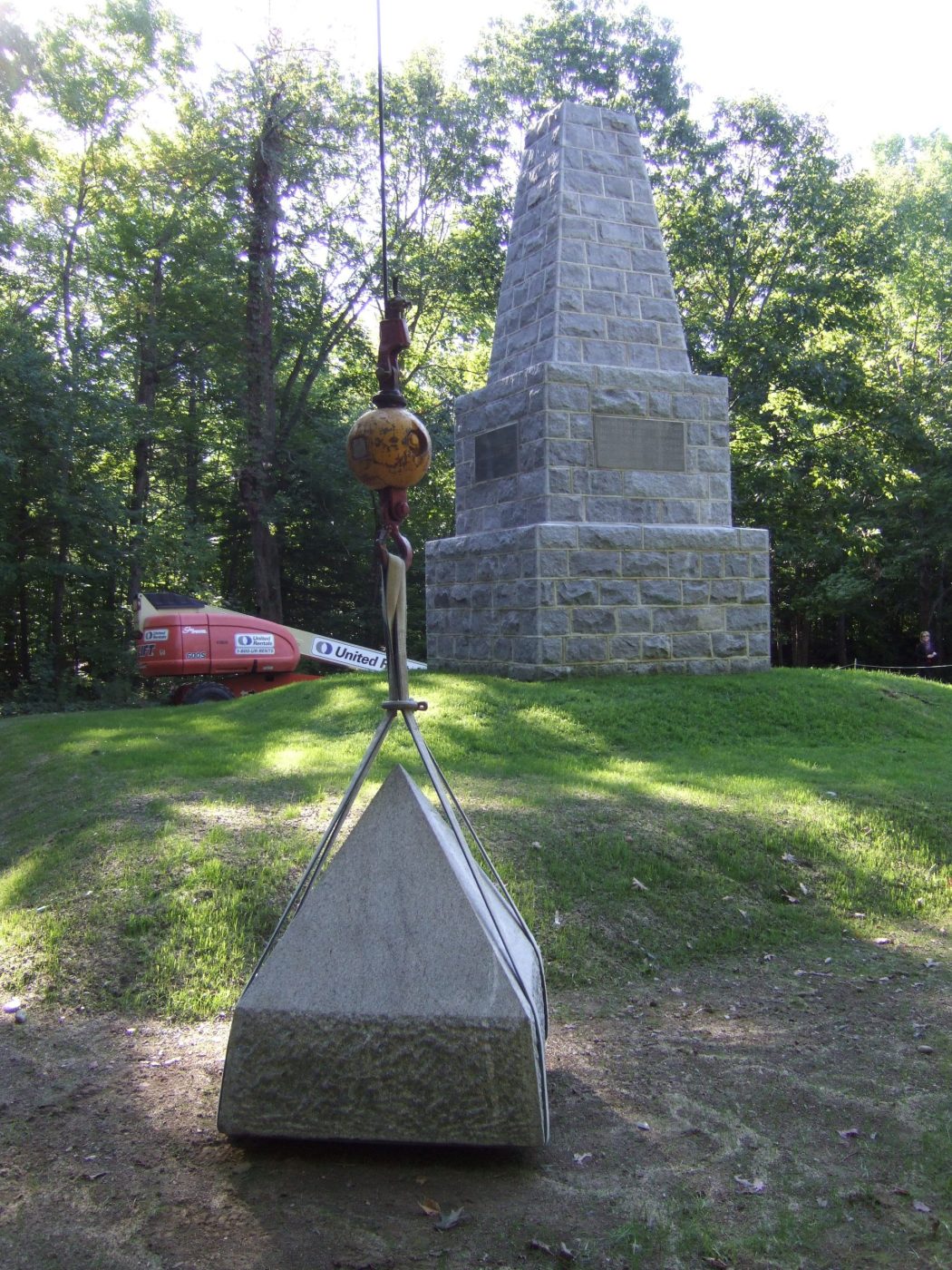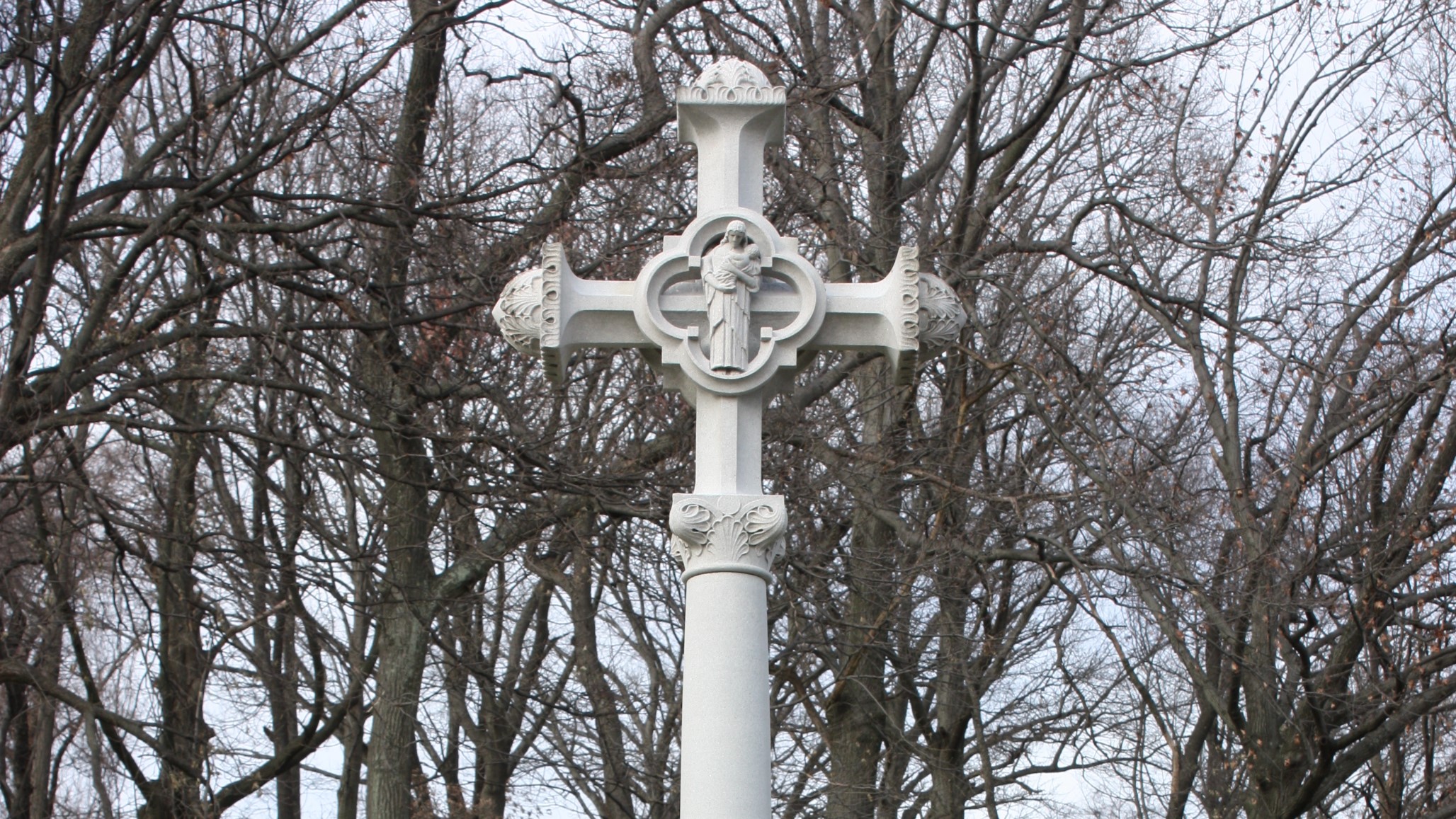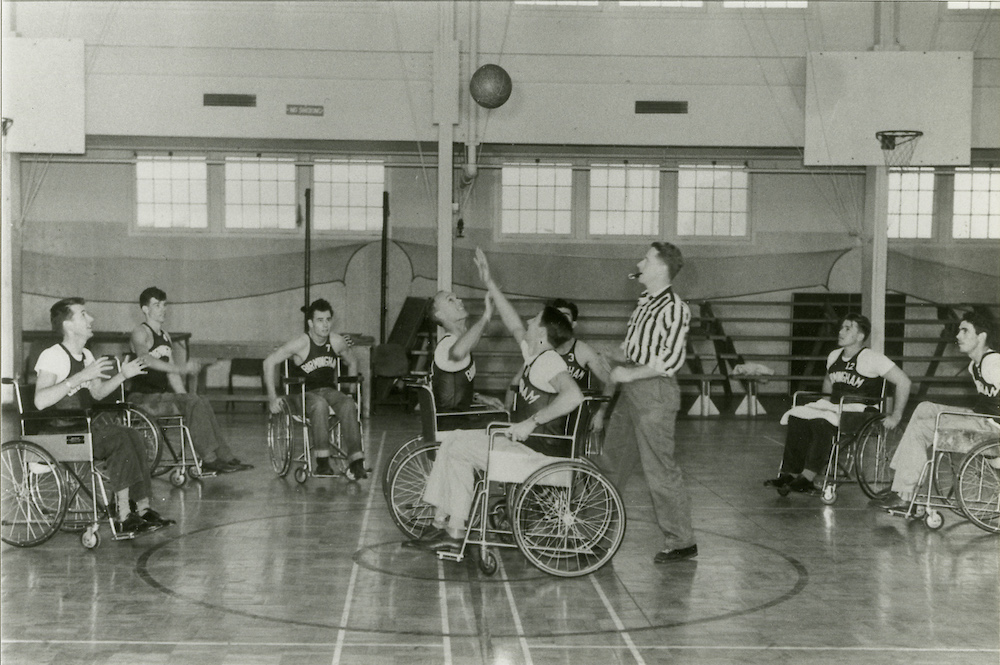
A time capsule filled with objects and historical materials provides a snapshot of a particular time and place. Buried within a building or memorial as it is constructed, the contents of the container offer a tangible connection between past and present. The National Cemetery Administration (NCA) has documentation on the time capsules that were occasionally imbedded in national cemetery monuments. In 2010, however, masons working on the Soldiers and Sailors Monument at Togus National Cemetery, Maine, unexpectedly discovered one.
All cemeteries—designated as national cemeteries in 1973—affiliated with the eleven oldest branches of the National Home for Disabled Volunteer Soldiers (NHDVS) feature a prominent monument, typically in the shape of an obelisk, erected several years after the Civil War. The cemetery at the Eastern Branch-NHDVS in Togus lacked such a memorial, to the distress of Luther Stephenson, governor of the branch. About 2,000 Veterans resided at the home. A group of them took matters into their own hands and erected a 26-foot-tall granite-block obelisk in 1889. They built it using stone quarried on the grounds. The 1890 National Home annual report commended the outcome: “The monument is very handsome in its rough simplicity, and is a source of pride to the men.” What went unreported was that the builders placed a time capsule inside.
The copper box, measuring 10”x 7”x 3”, was found to contain regional newspapers, National Home annual reports, and photographs. Despite the soldered lead seams, water had infiltrated the box and much of the contents were unsalvageable. To the delight of NCA historians who examined the container, however, seven members of the National Home’s engineering office had proudly autographed the box’s paper lining with their names and information about their military service. Most had served in Civil War regiments from Maine, Massachusetts, New Hampshire, and New York.

Also found within the monument were a green glass bottle with a rolled letter inside and the bowl of a smoking pipe. The National Cemetery Administration rededicated the Soldiers and Sailors Monument on September 15, 2010. Then-Under Secretary for Memorial Affairs Steve Muro used the ceremony to place a new time capsule under the capstone for future generations to uncover. This watertight container is an ammo box that NCA historians painted “VA blue” and filled with newspapers, challenge coins, brochures about VA and NCA, and letters from VA leadership.
By Sara Amy Leach
Senior Historian, National Cemetery Administration
Share this story
Related Stories
History of VA in 100 Objects
In the waning days of World War I, French sailors from three visiting allied warships marched through New York in a Liberty Loan Parade. The timing was unfortunate as the second wave of the influenza pandemic was spreading in the U.S. By January, 25 of French sailors died from the virus.
These men were later buried at the Cypress Hills National Cemetery and later a 12-foot granite cross monument, the French Cross, was dedicated in 1920 on Armistice Day. This event later influenced changes to burial laws that opened up availability of allied service members and U.S. citizens who served in foreign armies in the war against Germany and Austrian empires.
History of VA in 100 Objects
Basketball is one of the most popular sports in the nation. However, for paraplegic Veterans after World War II it was impossible with the current equipment and wheelchairs at the time. While VA offered these Veterans a healthy dose of physical and occupational therapy as well as vocational training, patients craved something more. They wanted to return to the sports, like basketball, that they had grown up playing. Their wheelchairs, which were incredibly bulky and commonly weighed over 100 pounds limited play.
However, the revolutionary wheelchair design created in the late 1930s solved that problem. Their chairs featured lightweight aircraft tubing, rear wheels that were easy to propel, and front casters for pivoting. Weighing in at around 45 pounds, the sleek wheelchairs were ideal for sports, especially basketball with its smooth and flat playing surface. The mobility of paraplegic Veterans drastically increased as they mastered the use of the chair, and they soon began to roll themselves into VA hospital gyms to shoot baskets and play pickup games.
History of VA in 100 Objects
After World War I, claims for disability from discharged soldiers poured into the offices of the Bureau of War Risk Insurance, the federal agency responsible for evaluating them. By mid-1921, the bureau had awarded some amount of compensation to 337,000 Veterans. But another 258,000 had been denied benefits. Some of the men turned away were suffering from tuberculosis or neuropsychiatric disorders. These Veterans were often rebuffed not because bureau officials doubted the validity or seriousness of their ailments, but for a different reason: they could not prove their conditions were service connected.
Due to the delayed nature of the diseases, which could appear after service was completed, Massachusetts Senator David Walsh and VSOs pursued legislation to assist Veterans with their claims. Eventually this led to the first presumptive conditions for Veteran benefits.






